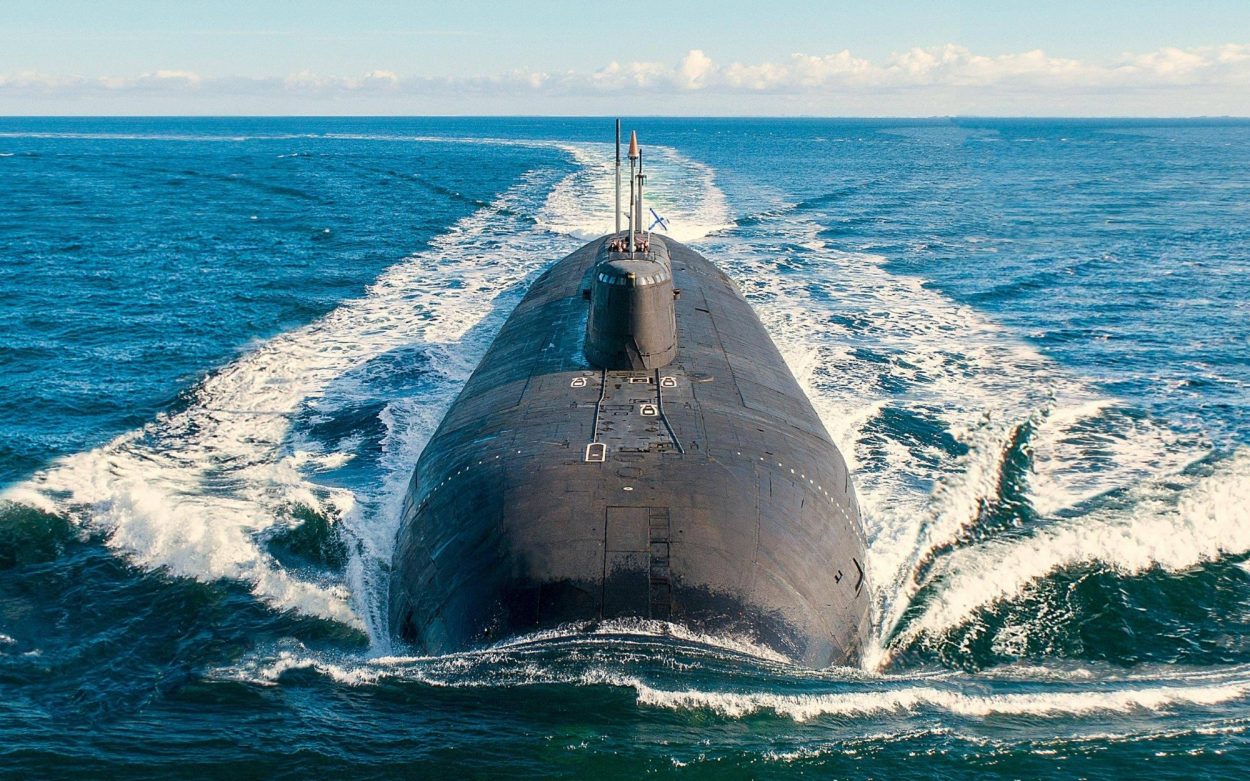Russia’s new naval base to accommodate its Belgorod and Khabarovsk special-purpose nuclear-powered submarines armed with Poseidon nuclear torpedoes, also called the ‘tsunami bomb,’ could be completed early next year.
China Flags ‘Intensive Military Activity’ By US In Its Backyard; Over 1000 Missions Conducted In 2022: Think Tank
“The construction of coastal infrastructure facilities for accommodating two special-purpose submarines in Kamchatka is set to be finished at the beginning of next year,” an unnamed source close to the Russian Ministry of Defense was cited as saying by the state-owned TASS news agency.
The Belgorod and Khabarovsk special-purpose submarines are intended to join Russia’s Pacific fleet, which will also consist of other submarines. However, the source was quoted as saying that the new special-purpose submarines “will deal with strategic deterrence.”
Belgorod is an expansive, customized special-purpose submarine constructed from the hull of an Oscar-II cruise missile submarine that was never completed.
The submarine’s hull is around 184 meters (604 feet) long, and the vessel’s displacement is up to 30,000 tons (when submerged).

The submarine is said to have a speed of about 32 knots (60 kilometers per hour) and can reportedly remain underwater for an estimated 120 days without returning to the surface. Its propellers are said to have been designed to escape sonar.
While the Khabarovsk-class submarine, also called Project 09851, is based on Borei-class ballistic missile submarines, it is smaller and carries different weapons. It is reportedly a 10,000-ton vessel with an estimated length of around 120 meters compared to the 160 meters of the Borei-class submarines.
According to HI Sutton, an expert on naval warfare, the submarine is powered by one nuclear reactor, probably an OK-650B driving a single pumpjet.
While the Kharabovsk-class submarines are not expected to have a ballistic missile section, they will mainly carry Status-6 Oceanic Multipurpose System long-range nuclear torpedoes and anti-ship and land-attack missiles.
The Belgorod was commissioned by the Russian Navy in July last year, while the lead boat of the Kharabovsk-class submarine is slated to be inducted officially into the service in 2024.
Belgorod and Kharabovsk-class submarines are designed to be nuclear strike and deterrence vessels. Besides that, Belgorod is meant to act as a host submarine or a ‘mothership’ to the small, nuclear-powered submarines that can dive deep.
To carry out a nuclear strike, Belgorod and Kharabovsk-class submarines will carry six nuclear-tipped Poseidon UUVs.
Poseidon: Ingenious Method Of Nuclear Deterrence
The Poseidon UUV is one of Russia’s six strategic weapons, also known as ‘Super Weapons,’ that Russian President Vladimir Putin unveiled during a speech in 2018 at the Manezh Central Exhibition Hall near the Kremlin.
Other super weapons include the Sarmat Inter-continental Ballistic Missile (ICBM), Avangard Hypersonic Glide Vehicle (HGV), the Burevestnik cruise missile, the Kinzhal air-launched hypersonic missile, and the Tsirkon ship-launched hypersonic missile.
Poseidon is perhaps the biggest game-changing super-weapon in the Russian arsenal, adding another dimension to nuclear deterrence. It is an ‘Intercontinental Nuclear-Powered Nuclear-Armed Autonomous Torpedo.’

The weapon’s speed is expected to be around 70 knots – faster than existing torpedoes – and according to some reports, maybe even 108 knots, making it uncatchable. Its operating depth is about 1,000 meters (3,300 feet), thus making it elusive as well.
Powered by a nuclear reactor, the Poseidon UUV has unlimited operational flexibility concerning launch and target locations. It can also be launched from under the ice caps.
The Poseidon represents a very ingenious method of nuclear deterrence envisioned by Russian military planners.
Russians have long wanted to circumvent the American ballistic missile defense systems deployed in Europe, creating a strategic imbalance against Russia. So, deploying nuclear weapons underwater enables the Russian military to evade a US Ballistic Missile Defense (BMD) screening.
The Poseidon is also said to be capable of performing “three-dimensional” evasive maneuvers to increase its longevity.
Moreover, the US has a network of satellites equipped with infrared sensors to detect and track Russian intercontinental ballistic missiles. In the air, the ignition of the missile engine generates extreme heat, creating a temperature difference against the cold background for the satellites overhead to pick up.
Instead, satellites can’t see what happens in the depths of the sea. Besides, Poseidon is reportedly designed to emit very little heat and travel silently.
Armed with a two-megaton nuclear warhead, the Poseidon can destroy aircraft carrier strike groups (CSG) and enemy infrastructural facilities in coastal regions.
Both Belgorod and Kharabovsk-class submarines, armed with nuclear-tipped Poseidon UUVs, serving in Russia’s Pacific Fleet, would threaten US naval bases on the West Coast and key cities like Los Angeles. Russia intends to deploy just over 30 Poseidon UUVs.
Russia Completed Throw Test Of Nuke-Tipped Poseidon Torpedo
In January, the state-owned TASS news agency reported citing an unnamed source close to the Russian military department, that the crew of the Belgorod nuclear submarine completed a series of tests of the Poseidon torpedo mock-up.
According to the source, the test’s purpose was to check the operation of the Poseidon launch system. “Throw firing of the Poseidon super-torpedo model was carried out to clarify the behavior of the submarine at different depths after the launch,” the source said.
Western media reports also corroborated this by citing unnamed senior US intelligence officials, who claimed to have observed Russian naval vessels, including the Belgorod, possibly preparing for the first-ever test of Poseidon nuclear torpedoes.
These Russian naval vessels were observed leaving the testing area in the Arctic Sea. However, the test was allegedly aborted due to technical difficulties, according to the claims made by US officials.
???#Breaking: Russia’s Missing Nuclear Submarine #Belgorod located in Arctic. pic.twitter.com/8OgIc3w2RQ
— Terror Alarm (@Terror_Alarm) October 5, 2022
Apart from that, there were reports of a secret NATO assessment in late September, which is said to have raised concerns about Belgorod’s deployment in Arctic seas, possibly to test the Poseidon UUV for the first time.
Based on these reports, it appears that the Russian Navy might have spent more than a month in the Arctic Sea preparing for the test but aborted allegedly due to technical difficulties.
Nevertheless, US officials had assessed at the time that Russia could make another attempt to test the torpedo.
- Contact the author at tanmaykadam700@gmail.com
- Follow EurAsian Times on Google News




